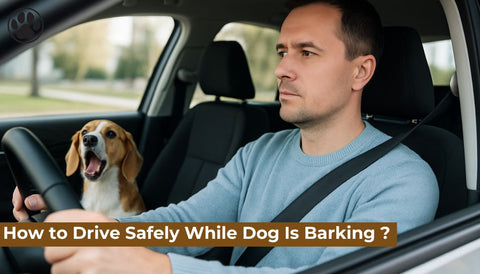
What Tests Do Police Dogs Have to Take?
of reading - words
Police dogs, also known as K9s, play a crucial role in law enforcement. From detecting narcotics to tracking suspects, these highly trained dogs perform tasks that require exceptional skill, discipline, and focus. But what does it take for a dog to become a police K9? In this article, we will explore the rigorous tests and training programs police dogs undergo to ensure they meet the high standards required for the job.
The Journey of a Police Dog
Before becoming certified, police dogs must pass a series of physical, mental, and behavioral tests. These evaluations assess their aptitude for specific duties and ensure they can handle the demands of law enforcement work. Below, we break down the different types of tests police dogs must take.
Types of Tests Police Dogs Must Pass
1. Temperament and Behavioral Testing
A dog’s temperament is critical for police work. Before formal training begins, potential K9 candidates undergo behavioral assessments to evaluate:
-
Confidence: A police dog must remain calm and composed in high-pressure situations.
-
Aggression Control: While some level of assertiveness is necessary, excessive aggression disqualifies a dog from service.
-
Socialization Skills: Police dogs must be comfortable working with handlers and navigating crowds without becoming anxious or distracted.
Temperament tests may include exposure to loud noises, unfamiliar environments, and interactions with strangers to assess the dog’s reactions.
2. Obedience Training and Testing
Obedience is a cornerstone of police dog training. Dogs must demonstrate unwavering compliance with their handler’s commands, even in distracting or high-stress environments. Obedience tests typically include:
-
Sit, Stay, Come: Basic commands performed flawlessly.
-
Leash Walking: Maintaining control and focus while on a leash.
-
Off-Leash Control: Responding to commands without physical restraints.
Handlers use positive reinforcement techniques to build a strong bond and ensure reliable command adherence.
3. Physical Fitness and Agility Tests
Police dogs need to be in peak physical condition to handle the physical demands of their work. Fitness and agility tests evaluate:
-
Endurance: The ability to run, climb, and perform tasks for extended periods.
-
Agility: Navigating obstacle courses, including jumps, tunnels, and narrow walkways.
-
Strength: Retrieving heavy objects and subduing suspects if necessary.
Regular exercise and conditioning are integral to a police dog’s training regimen.
4. Scent Detection Tests
One of the most critical roles of police dogs is scent detection. Whether it’s finding narcotics, explosives, or missing persons, a dog’s sense of smell is invaluable. Detection tests include:
-
Narcotics Detection: Identifying hidden drugs in vehicles, buildings, or luggage.
-
Explosives Detection: Locating dangerous materials with precision.
-
Search and Rescue: Tracking human scents over long distances and challenging terrains.
Handlers use scent imprinting techniques to teach dogs to associate specific odors with rewards, ensuring consistent performance.
5. Bite Work and Apprehension Training
For dogs assigned to apprehension duties, controlled aggression is vital. Bite work training focuses on:
-
Targeting Specific Areas: Ensuring dogs bite only designated areas, such as the arm, to minimize injury.
-
Release on Command: Letting go immediately when instructed by the handler.
-
Chasing and Subduing Suspects: Maintaining focus and control during pursuits.
These skills are crucial for safely detaining suspects while adhering to legal and ethical standards.
6. Environmental Stability Tests
Police dogs often work in unpredictable environments. Stability tests assess how well a dog can maintain focus and composure in:
-
Crowded spaces, such as concerts or public events
-
Noisy settings with sirens, fireworks, or heavy machinery
-
Extreme weather conditions, including rain, snow, or heat
These evaluations ensure the dog’s reliability in real-world scenarios.
7. Certification Exams
After completing their training, police dogs must pass certification exams to validate their readiness for duty. Certifications vary by country and organization but generally include:
-
Practical exercises, such as locating hidden objects or apprehending suspects
-
Simulated scenarios to test obedience and decision-making
-
Timed challenges to assess efficiency and accuracy
Certification must often be renewed annually to maintain operational standards.
Specialized Roles and Additional Testing
Some police dogs undergo specialized training for unique roles, requiring additional tests:
-
Cadaver Dogs: Detecting human remains in forensic investigations.
-
Arson Dogs: Identifying accelerants at fire scenes.
-
Customs Dogs: Detecting contraband at borders or airports.
-
Therapy Dogs: Providing emotional support to victims or officers in stressful situations.
Each specialty involves tailored training programs and tests specific to the job’s demands.
The Role of the Handler
A police dog’s success depends heavily on their handler. Handlers undergo rigorous training alongside their canine partners, learning how to:
-
Interpret the dog’s signals and body language
-
Reinforce positive behaviors and correct mistakes
-
Navigate legal and ethical considerations of K9 deployment
The bond between handler and dog is crucial for effective teamwork.
The Lifespan of a Police Dog’s Career
Most police dogs begin training as puppies and retire between the ages of 7 and 10, depending on their health and performance. Retired K9s often live with their handlers or adoptive families, enjoying a well-deserved rest after years of service.
Frequently Asked Questions (FAQ)
1. What breeds are commonly used as police dogs? German Shepherds, Belgian Malinois, Labrador Retrievers, and Bloodhounds are among the most common breeds due to their intelligence, agility, and strong work ethic.
2. How long does it take to train a police dog? Training typically lasts 6 months to a year, depending on the dog’s role and progress.
3. Do police dogs enjoy their work? Yes, police dogs are selected for their natural drive and enthusiasm for tasks. Training is designed to be rewarding and enjoyable for the dogs.
4. Are police dogs trained to be aggressive? Police dogs are trained for controlled aggression, responding only when commanded. They are not inherently aggressive.
5. Can retired police dogs live with families? Yes, many retired police dogs live with their handlers or are adopted into loving homes, where they transition to a more relaxed lifestyle.




